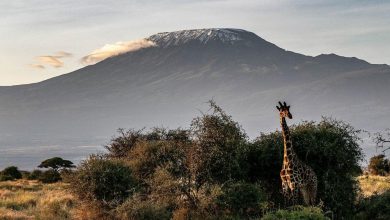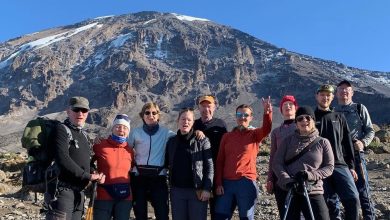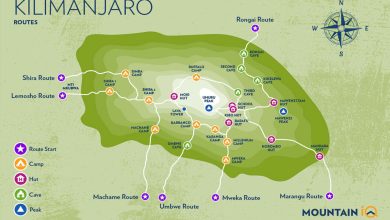Mount Kilimanjaro Glaciers: The 4 Famous Glaciers
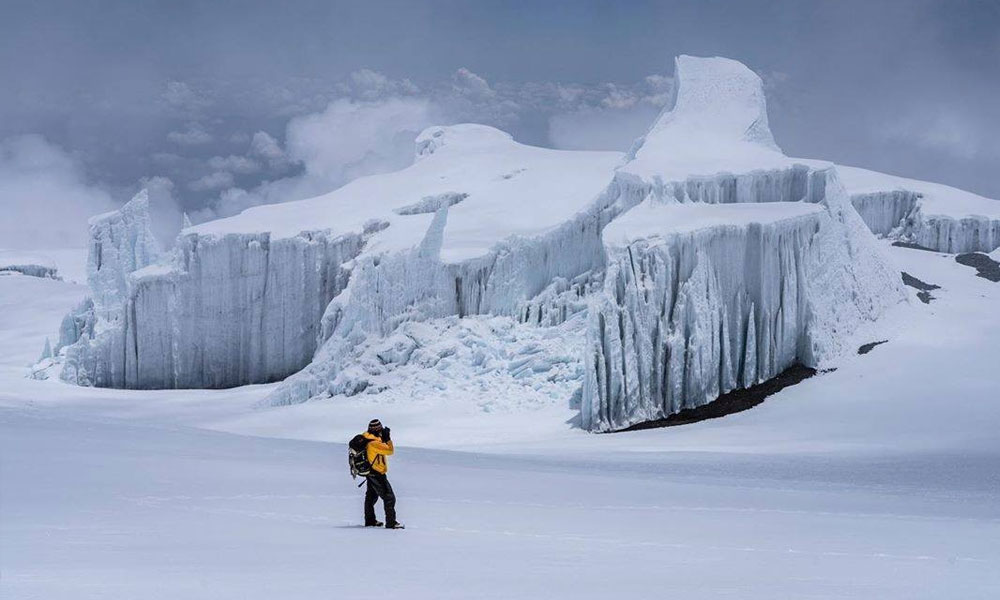
Kilimanjaro is one of the tallest mountains and one of the most popular ones in the world. There is barely just anyone who does not know about Kilimanjaro. But do you also know about the Kilimanjaro glacier? A lot of people wonder whether Kilimanjaro still has glaciers or not. The answer is it does! But unfortunately, the changing climatic conditions and carelessness of humans have been proven to put these glaciers at risk. However, all four glaciers in Kilimanjaro are intact and have been there since thousands of years ago.
In this article, we will talk about not just one but all the glaciers in Kilimanjaro. There has been an impact of global changes, but the glaciers have changed much to this date compared to how they used to be years ago. Stay tuned till the end of this article to learn more about Kilimanjaro Glacier.
What are the 4 Famous Kilimanjaro Glacier?
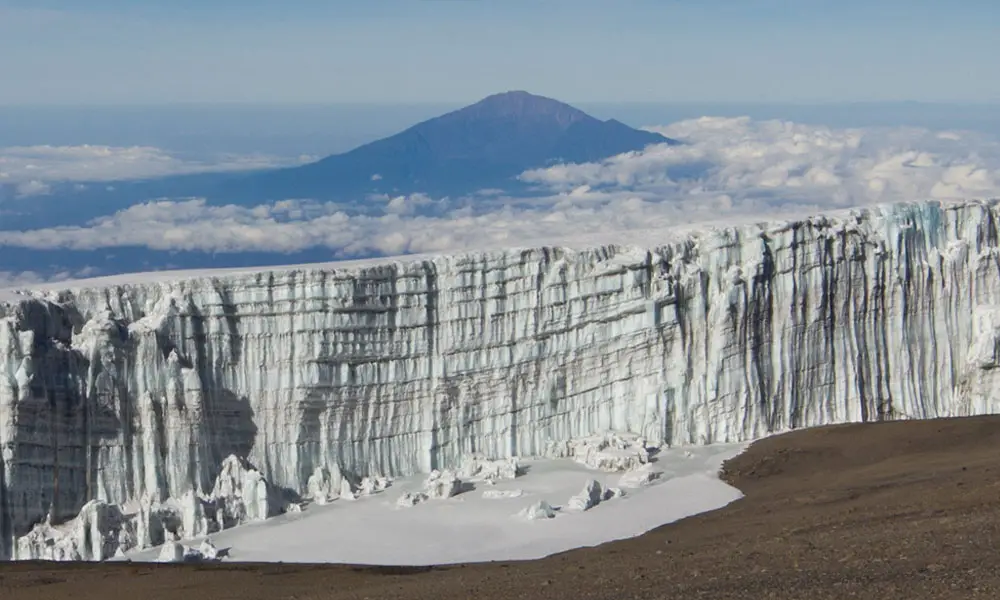
Glaciers are big blocks of ice that are found in the mountains. These are the most fragile yet the most beautiful aspects of the mountains. The Kilimanjaro Glacier consists of many glaciers, among which the largest is Furtwängler Glacier.
But then again, both the planet and humans have been failing to protect these beautiful mountain parts due to changing climatic conditions. Though it has not yet been proven how much glacier has been lost from Kilimanjaro, it is quite obvious that the glaciers have melted compared to how it was a few years ago. Along with the growth in global warming, the humidity in even the most mountainous region of Tanzania, i.e., Kilimanjaro, has been suffering.
Besides the Furtwangler Glacier, the Kilimanjaro Glacier also consists of Rebmann Glacier, Credner Glacier, and Arrow Glacier.
Furtwängler Glacier
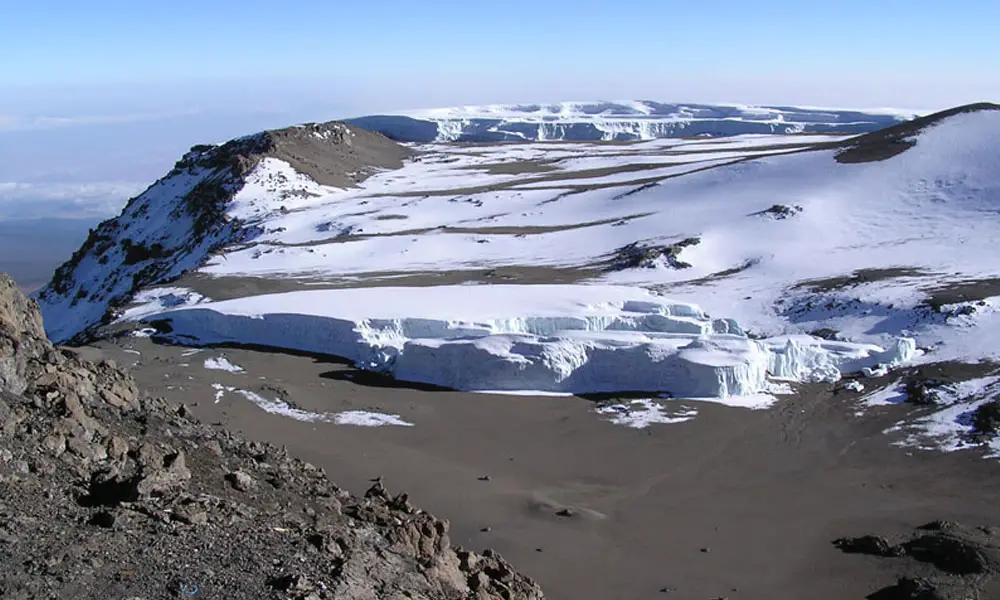
Furtwängler Glacier is located at the peak of Mount Kilimanjaro. It gets its name from mountaineer Walter Furtwängler. He, alongside Siegfried König started a fourth party and summited the mountain in 1912. The Kilimanjaro climb was quite legendary!
Unfortunately, from 1912 to 2023, about 85 percent of the ice cap melted and disappeared due to the changing weather conditions. The glacier was formed out of a small ice cap of Kilimanjaro and had been there for the longest time known. It has been estimated that the glacier is at least eleven thousand years old, dating back to 1650 CE.
One of the saddest realities, as per the statistics and patterns from the past to this date, is that the glacier is close to completely disappearing by the year 2060, which is not very far from the current time. All the ice had been estimated to have disappeared by 2040 at this pace.
The history of a drastic change in the glacier dates back to 1976 when the glacier started disappearing and making its complete half disappearance by the year 2000. Furtwangler went from 113,000 square meters (1,220,000 sq ft) to 60,000 m2 (650,000 sq ft). The decline was constant after the year. In 2018, the glacier had been cut to 11,000 m2 (120,000 sq ft). Though there is still a much smaller remnant of the glacier to this day, it had been forecasted from the declining patterns of the glaciers that it would be churned down to nothing by 2023. Thankfully, so has not been the case yet!
A mysterious thing happened in the Furtwangler glacier in 2006. A big hole was discovered by scientists during fieldwork in the center of the glacier. The hole runs deep to 6 meters (20 feet). This led to the glacier being cut into two halves the following year, in 2007.
Credner Glacier

Credner Glacier is located on the northwest slope at an elevation between 5,800 and 5,500 meters (19,000 and 18,000 ft) of Mount Kilimanjaro. This glacier is located in the top half of the glacier as well. The glacier goes down from the Northern Ice Field. This is possibly one of the largest glaciers in Tanzania, if not the largest.
The Credner glacier, sadly, has been the target of the growing climate change and has been decreasing in size for a while now. In 2013, it was estimated that the glacier would perish in a decade. So is not the case, but the glacier’s end may be very close, considering how badly the climate is changing. Credner has always been the likelihood of retreating since it is in the most exposed area of Mount Kili.
Rebmann Glacier
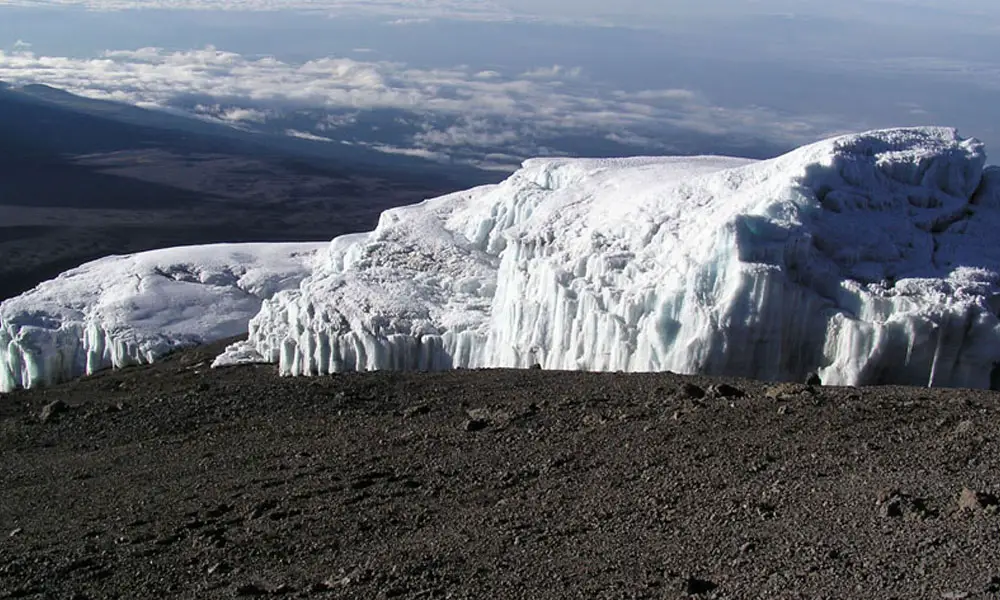
In 1848, German explorer and mountaineer Johann Rebmann reported the observations of the glaciers in Kilimanjaro. This gave the name Rebmann Glacier as a tribute to Johann. Rebmann is located on the opposite side of Credner Glacier.
Furthermore, it is a small remnant of the glacier in Kilimanjaro. The glacier has been retreating for many decades now, dating back to 1912, which makes it more than 100 years ago. And 82 percent of ice has perished from the glacier as of 2023.
Arrow Glacier
The arrow glacier is a small remnant of ice glacier in Mount Kilimanjaro located at an elevation between 5,470 and 5,300 meters (17,950 and 17,390 ft). The glacier is on the west side of the mountain. This glacier is adjacent to the Lemosho route of Mount Kilimanjaro. In the past, it had been forecasted that arrow glaciers may not even exist by 2011.
Furthermore, Arrow Glacier did not possess the name since the very beginning of time. It was only called so after it lost big parts of itself and only remained as a very small piece of ice. The Arrow Glacier was once part of the Little Barranco Glacier, which has already perished.
What type of glacier has Mount Kilimanjaro?
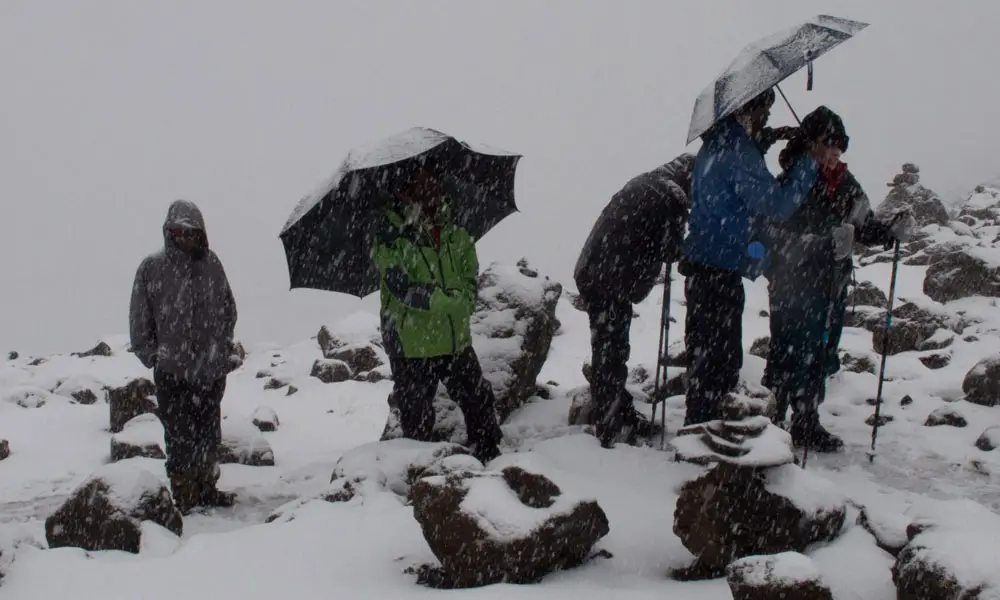
Mount Kilimanjaro has a tropical glacier alongside other peaks like Mount Kenya and the Rwenzori range across the Democratic Republic of Congo and Uganda in Africa.
All these mountains are very tall and cross an altitude of 5000 meters above sea level. This makes the mountain extremely cold and freezy throughout the year.
How many glaciers are on Kilimanjaro?
In total, Kilimanjaro has 16 glaciers that have yet to be discovered and explored. Among all these, the four most famous are Arrow Glacier, Rebmann Glacier, Credner Glacier, and Furdwangler Glacier. All these glaciers have been dispersed in almost every direction of the mountain. Kilimanjaro glaciers are located all at the summit of the peak.
One of the most heartbreaking realities about the Kilimanjaro glacier is that there have been at least four glaciers that have already disappeared to this date and numerous others which have retreated or kept retreating. This is the result of excessive humidity and harsh climatic changes. The glaciers are melting or breaking down from their original forms even today.
It has been forecasted by many explorers and intellectuals that the glaciers will no longer remain in existence and have the probability of disappearing completely with time.
Does Kilimanjaro still have a glacier?
The activities in nature are unstoppable. Though there still are glaciers in Kilimanjaro, they are not in the same form as they used to be even a few years ago. The glaciers are retreating and perishing with time. It is also said that the glaciers have been existing in Mount Kilimanjaro for 11,700 years.
Read also:
